In the world of market research, qualitative research serves as a powerful tool for uncovering deep, nuanced insights that go beyond the surface-level numbers and statistics. By engaging directly with consumers, businesses can gain a richer understanding of their audience, leading to more informed decisions and more effective strategies. Here’s what you should look for in qualitative research to make the most of its potential:
Emotions: The Heart of Consumer Experience
Understanding the emotions tied to a product, service, or brand is crucial. Whether it's the excitement of discovering a new feature, the satisfaction from a seamless experience, or the frustration with a persistent issue, emotions provide a direct window into consumer loyalty and areas needing improvement. Paying attention to these emotional cues can help businesses connect more deeply with their customers.
Example of AI-based sentiment analysis with Reveal
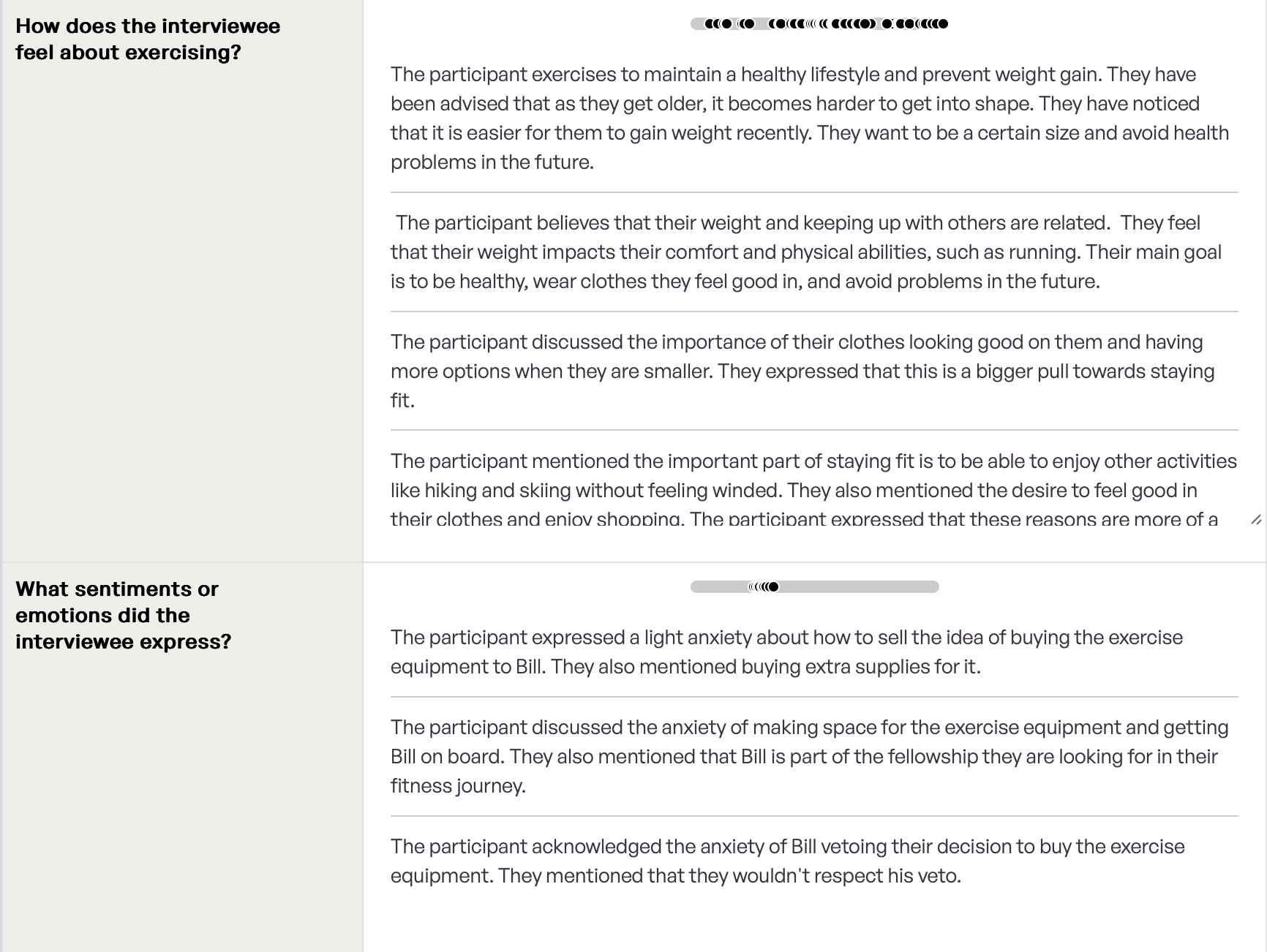
Needs and Wants: The Core Drivers
Identifying the underlying needs and desires of consumers is foundational. These can be practical, such as a product solving a specific problem, or more psychological, like the need to feel valued or confident. Understanding these needs helps tailor offerings that resonate more profoundly with your target market.
Example of Needs and Wants analysis with Reveal
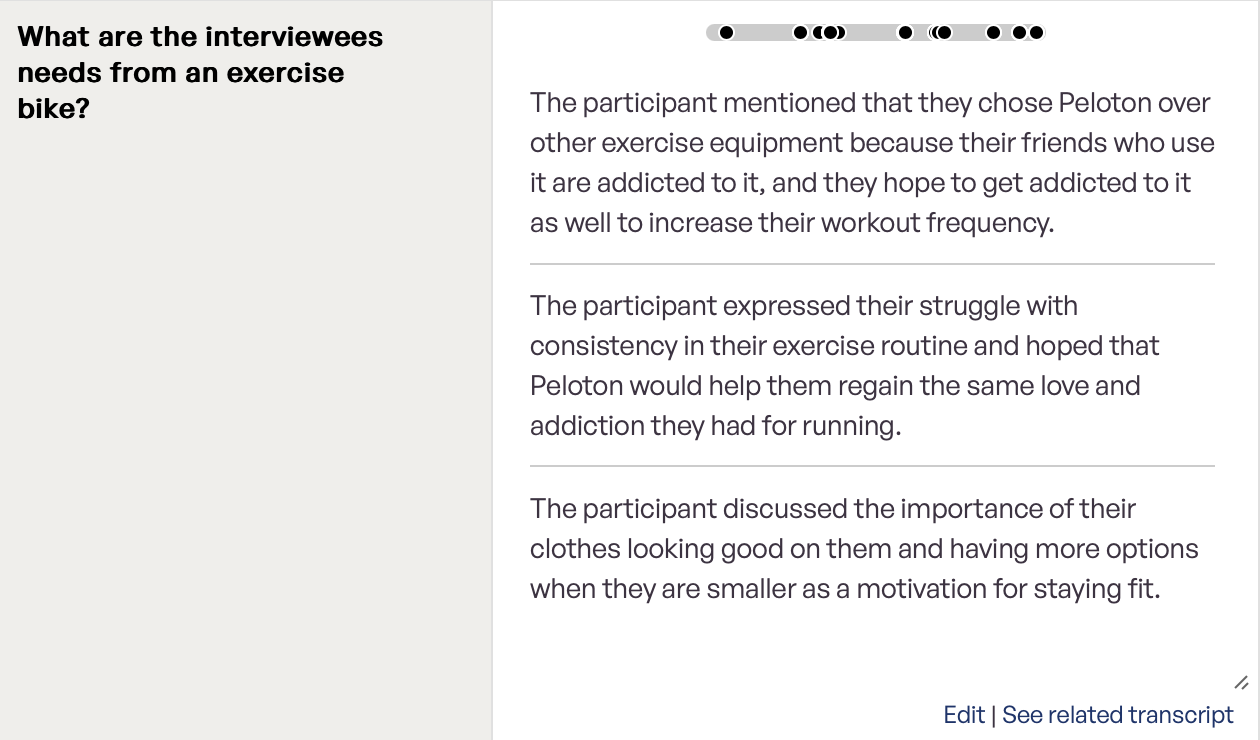
Behaviors: Observing Interaction Patterns
Watching how consumers interact with a product or service reveals a lot about usability and appeal. Noting their purchasing habits, usage patterns, and associated rituals can highlight pain points and opportunities for innovation. These insights can guide user-centered design and improve customer satisfaction.
Example of Behaviors analysis with Reveal

Attitudes and Perceptions: Shaping the Brand Image
Consumer attitudes and perceptions about a brand or product influence their decision-making process. Gathering insights into their beliefs, opinions, and attitudes helps shape marketing strategies that align with consumer expectations and enhance brand perception.
Example of Attitudes and Perceptions analysis with Reveal
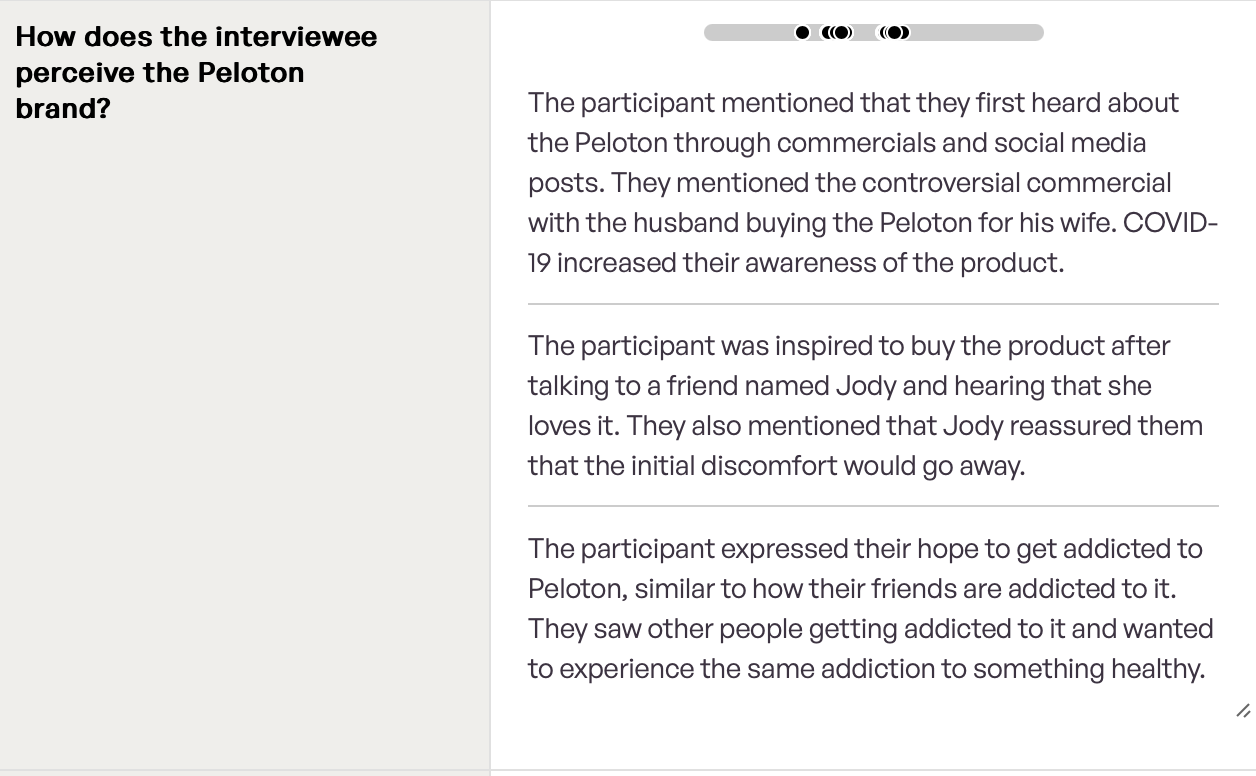
Motivations: The Why Behind the Actions
Delving into what motivates consumer actions and choices is key. Whether it’s the desire for convenience, the need for reliability, or the appeal of a trendy design, understanding motivations allows businesses to craft messages that resonate and drive engagement.
Example of Motivations analysis with Reveal

Preferences: Tailoring to Consumer Tastes
Identifying specific likes and dislikes provides a clearer picture of what appeals to your audience. This includes preferences for certain features, styles, or communication methods. Catering to these preferences can differentiate your offering and build stronger customer relationships.
Example of Preferences analysis with Reveal

Barriers and Pain Points: Overcoming Obstacles
Recognizing obstacles that prevent consumers from purchasing or using a product is essential. These barriers can range from usability issues to lack of awareness. Addressing these pain points can guide product improvements and refine marketing strategies to better meet consumer needs.
Example of Pain Points analysis with Reveal
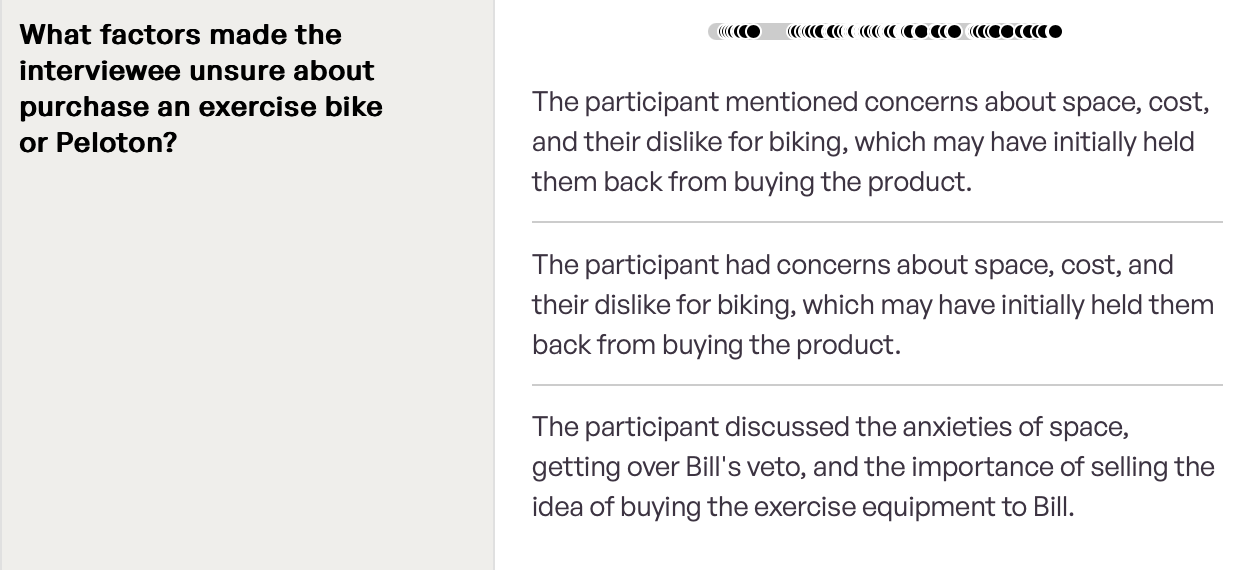
Cultural and Social Influences: Context Matters
Considering cultural and social factors is crucial in understanding consumer behavior. Societal norms, values, and peer influences shape how consumers perceive and interact with products. Tailoring your approach to align with these influences can enhance relevance and acceptance.
Example of Cultural and Social Influences analysis with Reveal

Language and Terminology: Speaking Their Language
Paying attention to the words and phrases consumers use provides insight into how they relate to the product or service. This can inform more effective communication strategies, ensuring that marketing messages resonate and connect with the audience on a deeper level.
Example of Language and Terminology analysis with Reveal
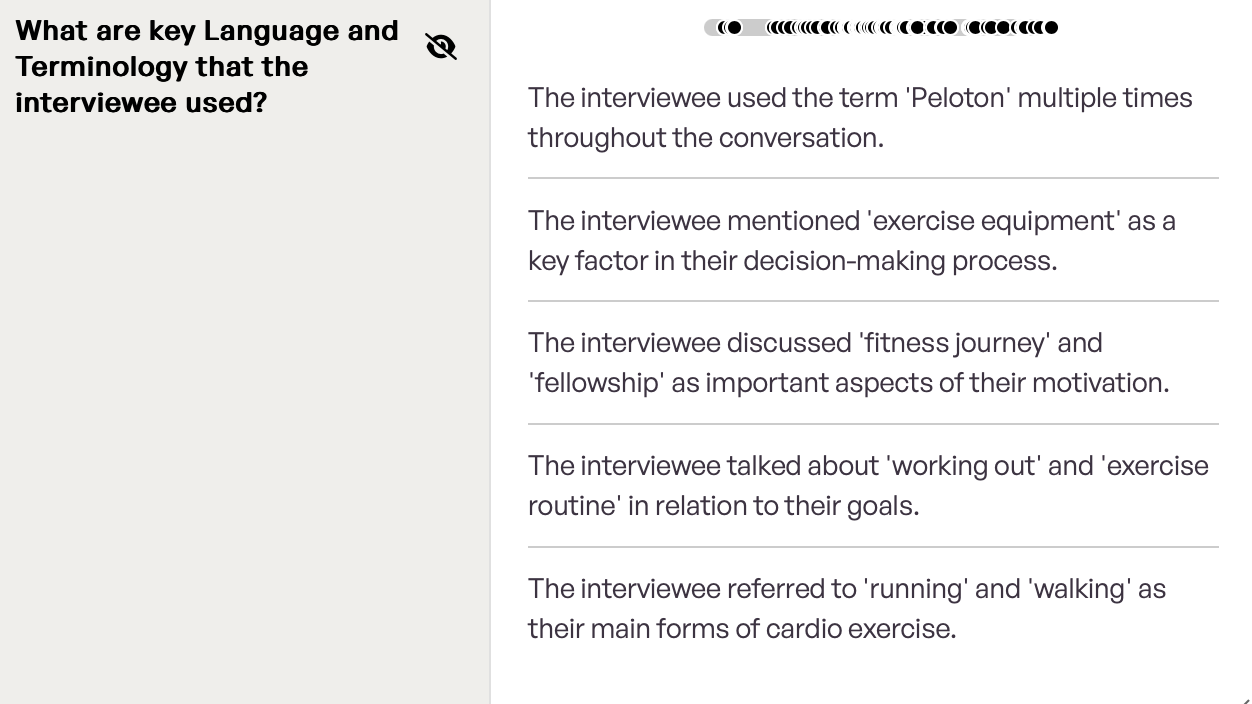
Unmet Needs and Opportunities: Finding the Gaps
Looking for gaps in the market where consumer needs are not currently met can reveal opportunities for new products, services, or improvements. This proactive approach can position your business as a leader in innovation and customer satisfaction.
Example of Unmet Needs and Opportunities analysis with Reveal
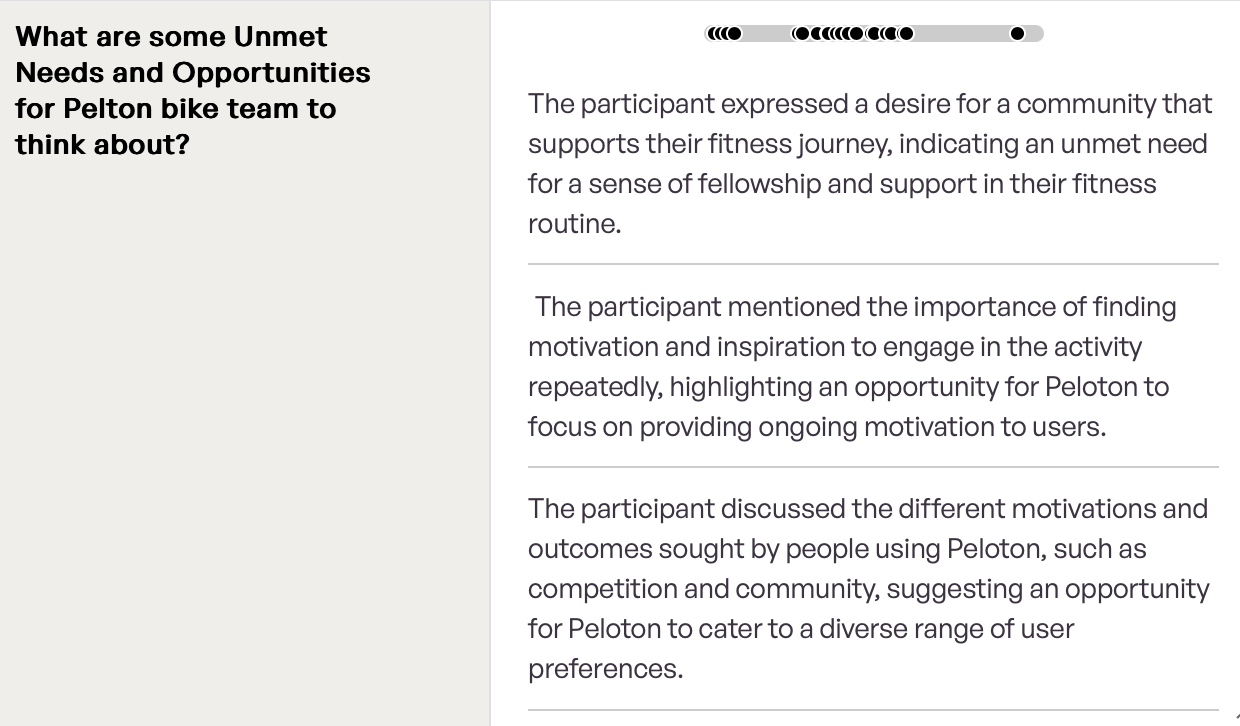
By focusing on these key elements, businesses can unlock the full potential of qualitative research. This deeper understanding of consumer emotions, needs, behaviors, and more can drive product development, refine marketing strategies, and ultimately lead to greater success in the marketplace.
Reveal, leverages AI to synthesize qualitative research, helping you uncover and analyze all these critical elements. With Reveal, you can gain actionable insights and make data-driven decisions that align with your customers' needs and preferences.

